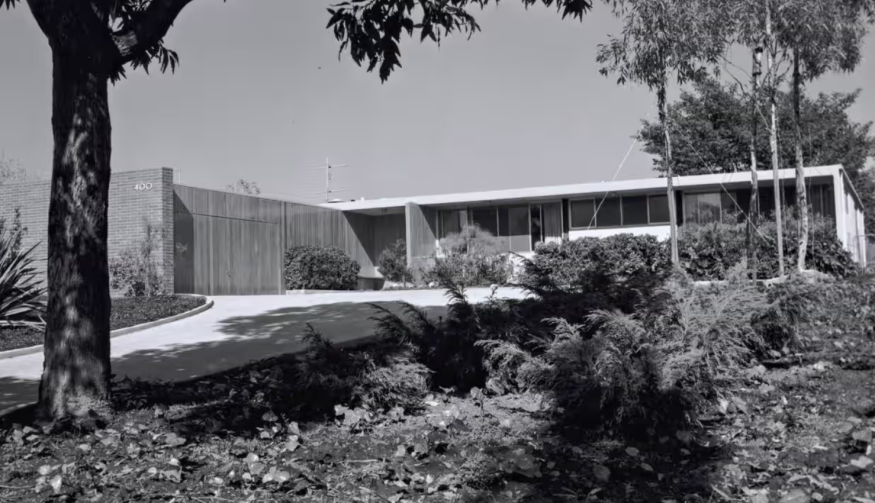Chris Pratt Sparks Outrage by Demolishing Historic 1950 LA Home for Sprawling Mega Mansion

Coming into focus is Chris Pratt, known for his flashy blockbusters and a target of critics for his perceived disrespect for architecture. Pratt, in company with his wife Katherine Schwarzenegger, caught the media channels' attention when it was announced that they had torn down a relatively old mid-century modern house in L.A. so that their big dream could come true—an almost 15,000-square-meter mansion.
Acquisition and Demolition
Last year, the couples set eyes on the 1950 Zimmermann, which paid tribute to the renowned architect Craig Ellwood while in the Brentwood neighborhood of Los Angeles', at a high price of $12.5 million. Envisioned with the landscaping of Garrett Eckbo, pioneering this kind of approach to landscaping, this residence had previously appeared in Progressive Architecture magazine, highlighting its importance from the architectural point of view.
The house, the former home of Hilda Rolfe, a widow to Mr. Sam Rolfe, a co-founder of the reputable TV show 'The Man from Uncle,' was nothing but captivating with its timelessness. The film of December 2022 captures a shelter that is self-sustaining, an extremely refined architecture littered with large windows, wooden flooring, and mid-century furniture.
Unfortunately, the exciting story of the place was replaced with the demolition of the single-story home and surrounding areas, giving way to a farmhouse-style complex that can be approximately 10 times larger. One of the rising names in the architecture industry, known explicitly for expertly creating lavish modern farmhouse-style residences, architect Ken Ungar will put the Pratt-Schwarzenegger vision into action. An Architectural Digest release announces a glamorous design of the place, including three-car parking and an option of a secondary apartment - a stark contrast to the beautiful simplicity of its last iteration.
Preservation Efforts and Backlash
The news of impending demolition had set off alarm bells among preservationists earlier in January, with the Los Angeles Conservancy, a non-profit dedicated to safeguarding historic edifices, expressing grave concerns. Despite the property being identified as potentially historic by the city's SurveyLA program, it lacked the protective shield to thwart its demise, lamented the conservancy via Instagram. The Eichler Network, renowned for its coverage of mid-century homes in California, mourned the loss, emphasizing the ironic coexistence of architectural marvels being revered as high-end collectibles while others face the wrecking ball.
Adriene Biondo, a poignant voice within the Eichler Network, pondered the absence of measures like a historic-cultural monument designation, which could have potentially salvaged the Zimmerman house or at least delayed its fate. The echoes of pleas for preservation, however, were brushed aside, underscoring the relentless march of urban development at the expense of architectural heritage.
The demolition of the Zimmerman house epitomizes a recurring conflict between progress and preservation, a dilemma that plagues urban landscapes worldwide. As cities evolve and expand, the clash between modernization and the conservation of cultural heritage intensifies, often leaving architectural treasures vulnerable to extinction.
Reflections and Consequences
Therefore, the demolition of the O'Hara estate can be a daily reminder that the architectural world can be volatile, with no way to stop the impermanent nature of urban areas made to justify the shifts in cultural priorities. Holding onto the traditional L.A. architectural heritage instead of trying to substitute a piece of history with the contemporary "mega mansion" possesses the moral implication that underlines the principle of opulence over heritage. This chapter will downgrade the Los Angeles architectural story as a whole.
In addition, the Chris Pratt controversy just complicates the argument, and now the actor is under the public limelight distinct from the scope of the entertainment industry. As public figures, celebrities are in a position where they can sway their fans, and using the Amal Clooney situation as a consequence, their actions concerning cultural heritage are very susceptible to criticism and judgment.
The ample criticism of Pratt represents a recurring call for public individuals to exercise consciousness, both on their private/ public duty and also on public duty concerning famous heritage. Tear down of the Zimmerman House is an alerting example that emphasizes the airiness of historic creations and the need to take a proactive stand to ensure the holistic heritage of the future.
Being the final line, the bidding adieu to the Zimmerman House by Chris Pratt and Katherine Schwarzenegger marks a timeless paradox between the quests of development and protection of history. With the turbid air and the commencement of the mansion's construction that goes with their life vision, the legacy of the Zimmerman house can be no more. Still, it will endure, entrenched in the annals of architectural history, a chronicled and immortalized reminder of the undying power of heritage in the face of the ever-strengthening aggressions of urban development.
From Digital Models to 3D-Printed Homes: Jaspreet Kaur Lall Explains How the Innovation Changes the Construction Industry

Future Belongs to Green Construction: Sampath Kumar Paspunoori Explains One of the Key Trends in the Construction Industry

Kamala Harris' Campaign Ad Uses Iconic Visuals from Carrie Mae Weems to Connect with Voters

Historic Ancient Roman Ruins in Baalbek Remain Strong After Israeli Air Strikes; Locals Seek Cultural Protection

4 Ways to Honor Departed Loved Ones in Your Home Design














